InterviewSolution
Saved Bookmarks
| 1. |
Question : Mention the types of Cymose inflorescence. (or) Explain in detail about the types of cymose inflorescence. |
|
Answer» Solution :Cymose: Central axis STOPS growing and ends in a FLOWER, Further GROWTH is by means of axillary buds. OLD flowers present at apex and young flowers at base. Types of cymose: Simple cyme (Solitary): Determine inflorescenceconsists ofa single flower. It may be terminal or axillary. Eg: Hibiscus. 2. Monochasial Cyme (Uniparous): The main axis ends with a flower. From two lateral bracts, Only one branch grows further. It may be Helicoid or Scorpioid. (a) Helicoid: Axis develop on only one side and looks like a coil, atleast during the stage of early development. Eg: Hamelia, Potato. 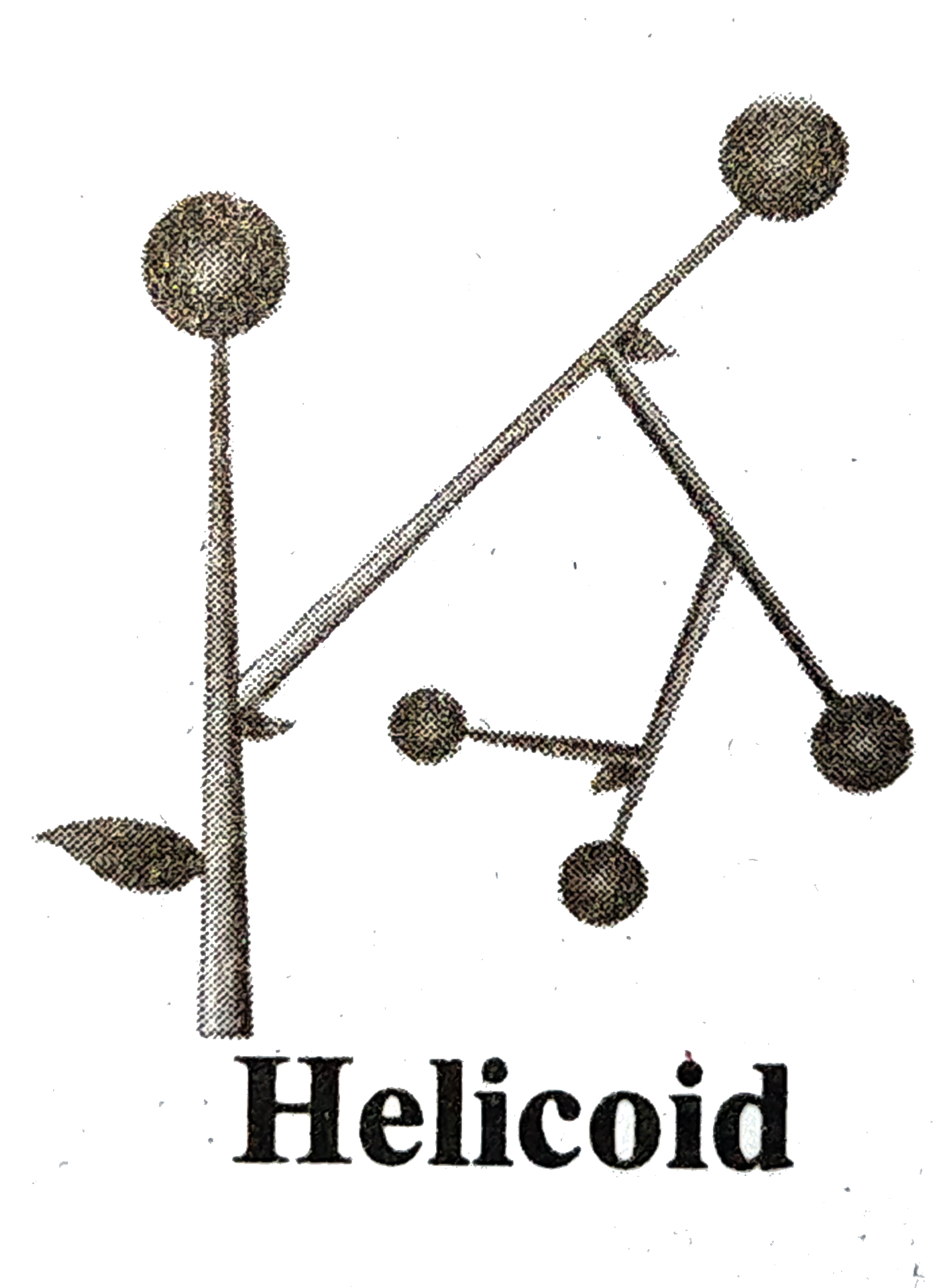 (b) Scorpioid: Monochasial cyme in which axes develop on alternate sides. Eg: Heliotropium. 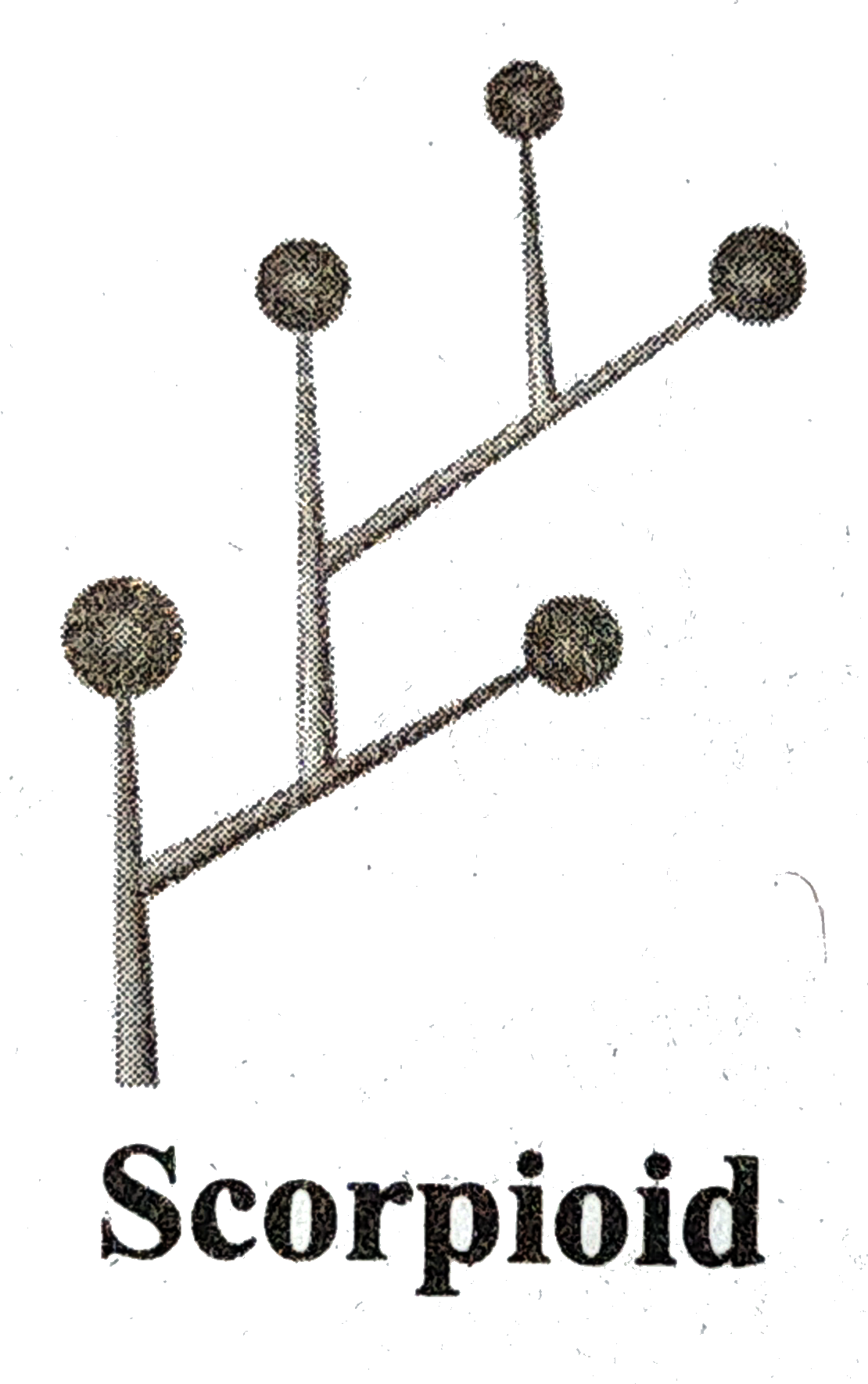 3. Simple dichasium (Biparous): (i) A central axis ends in a terminal flower, further growth is produced by two lateral buds. (ii) Each cyme consists of three flowers of which central one is old one. This is true cyme. Eg: Jasminum. 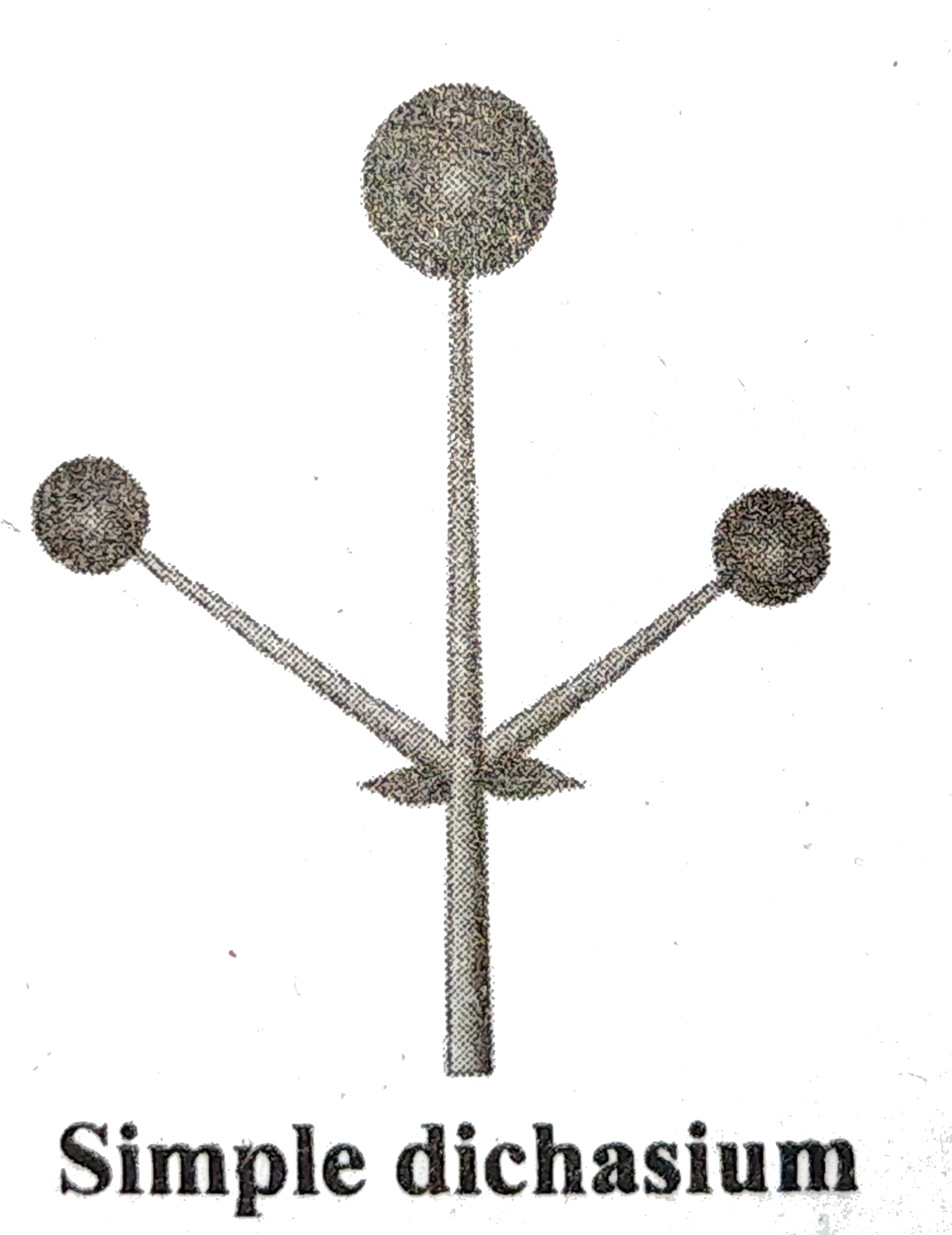 4. Compound dichasium: It has many flowers. A terminal old flower has lateral simple DICHASIAL cyme on both sides. Each compound dichasium consists of seven flowers. Eg: Clerodendron 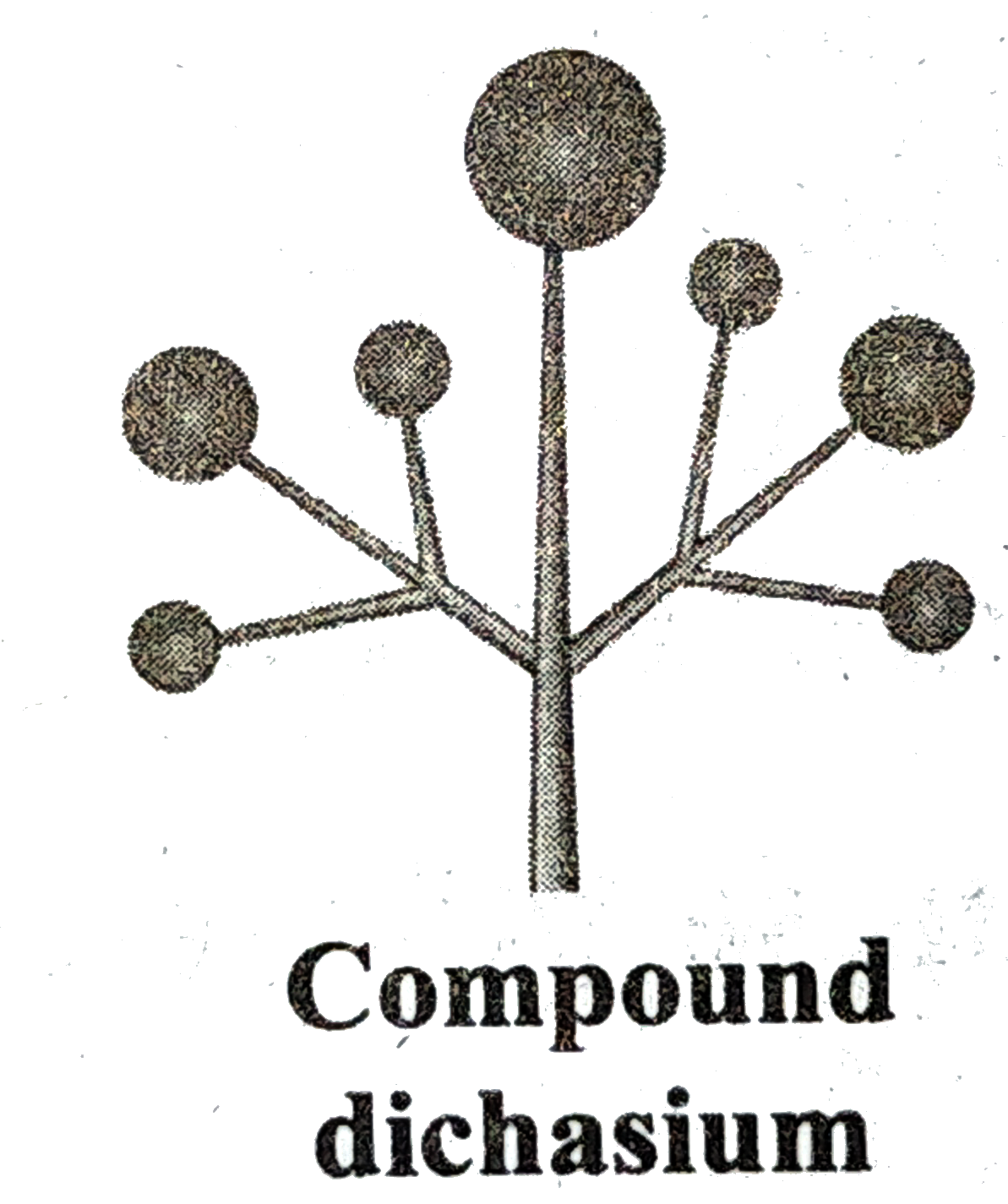 5. Polychasial Cyme (Multiparous): The central axis ends with a flower. The lateral axes branches repeatedly. Eg: Nerium. 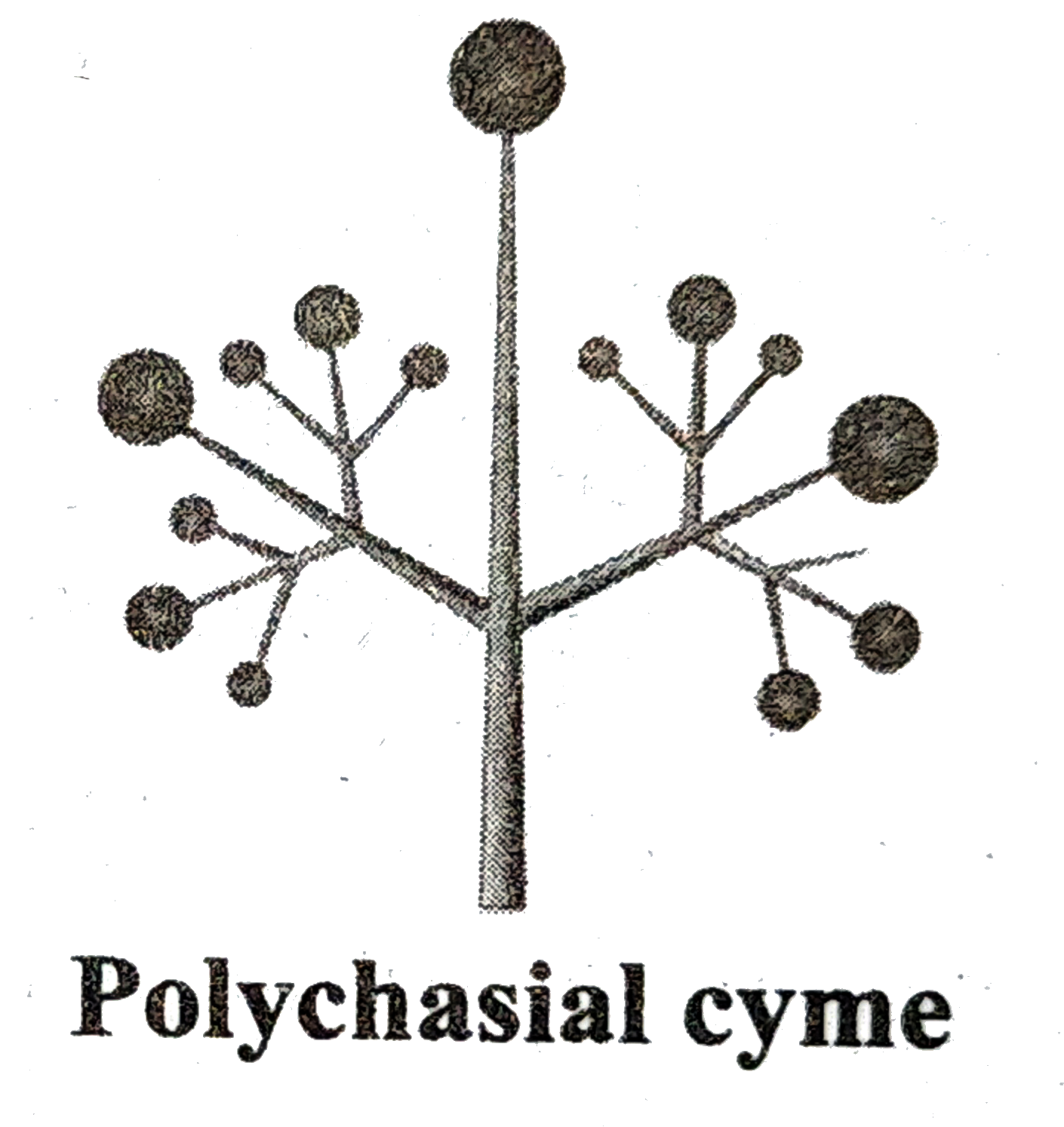
|
|